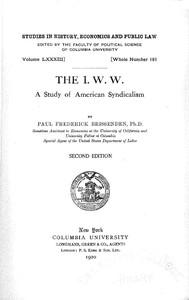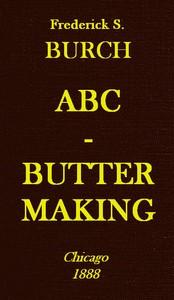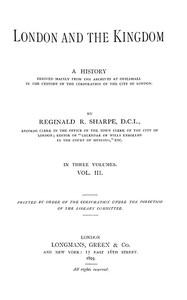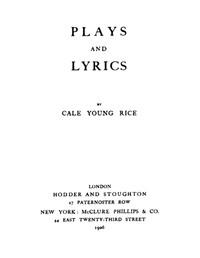|
|
Read this ebook for free! No credit card needed, absolutely nothing to pay.Words: 135993 in 56 pages
This is an ebook sharing website. You can read the uploaded ebooks for free here. No credit cards needed, nothing to pay. If you want to own a digital copy of the ebook, or want to read offline with your favorite ebook-reader, then you can choose to buy and download the ebook.

: The I. W. W.: A Study of American Syndicalism by Brissenden Paul F Paul Frederick - Syndicalism; Industrial Workers of the World@FreeBooksWed 07 Jun, 2023 per-capita tax and the W. F. M. sent organizers of the Sherman faction, but the dual unions did not last long, and in fact 220 itself was shaking, till finally it went down and the only cry you hear from those whom the powers that be cannot control is the one big union, and it is only a matter of a short time till the workers get aroused, and then there will be something doing. At that time we had job control in many mining camps. At For Governor, Thos. B. Casey, miner, W. F. M. I claim that we have left the field of mass organization and have got down to the field of industrial integral organization. I claim that industrial organization as it shall be exemplified by the Industrial Workers of the World is of an organic nature.... We recognize that mass organization is a thing that is to be abjured when we come into an industrial organization.... The difference between a mass organization and an industrial organization is that the mass organization is destructive ... industrial organization is constructive. It proposes to recognize the laws to the minutest details that environ, govern and control the working class. There is at this time a struggling local in Goldfield--Metal Mine Workers' Union No. 353, organized in August, 1914. The author recently wrote to the secretary of this local, making inquiries in regard to the present labor situation in Goldfield and the condition of the local union. He replied: "The economic conditions of this camp forbid the answer of the question you ask.... I trust ... it will not be long before 353 can meet openly and above board." The organization continued to over-indulge in strikes. It was more or less involved in the strike of the Electrical Workers of Schenectady in December, 1906. In 1907 it was involved in the following strikes among others: textile workers, Skowhegan, Maine, February to April; silk workers of Paterson. N. J., March; silk workers of Lancaster, Pa., fall of 1907; piano workers of Paterson, N. J., April; the loggers in Eureka, Cal., May, 1907; the saw-mill workers of Portland, Ore.; the sheet steel workers in Youngstown; the tube-mill workers in Bridgeport, Conn.; the miners in Tonopah, Nevada; the foundry workers in Detroit; and the smeltermen in Tacoma, Wash., in the summer of 1907. Goldfield, of course, was the scene of an almost continuous epidemic of strikes during the years 1906 and 1907. In his report to the third convention the General Secretary-Treasurer says that Not counting the strike and lockout in Goldfield, ... we had 24 strikes in which approximately 15,500 members participated. Most of these strikes lasted two to six weeks, one nine weeks, two lasted ten weeks and longer, and the strike of the Tacoma smeltermen lasted over six months.... Out of all these strikes ... two must be considered flat failures.... All other strikes ended either in compromise or in the complete attainment of what the strikes had been inaugurated for. Portland has just passed through her first strike conducted by the Industrial Workers of the World, a new and strange form of unionism, which is taking root in every section of the United States, especially in the West. The suddenness of the strike and the completeness of the tie-up are things quite unprecedented in this part of the country. These conditions did not merely happen--they came as direct results of the peculiar form and philosophy of the movement that brought the strike into being. "If the street-car men had been organized under our motto, together with all other A. F. of L. men, the street-car strike would have lasted ten minutes," says Organizer Fred Heslewood. The boast is not an extravagant one. Wherever the Industrial Workers of the World are organized they can paralyze industry at almost the snap of a finger. It is the way they work. "Well, you've tied us up. I didn't think you could do it, but you did. You're clever; I'll give you credit for that. I didn't think any union could close this mill," one of the mill owners is reported as having said to Organizer Yarrow. "You yourself have taught us all we know," replied Yarrow. "We organize on the same plan as you do and we've got you." One peculiar feature about the great mill strike was that ... there was absolutely no violence, no law-breaking and no crying of "scab." Just one man was arrested for trespassing, and he imagined that he was standing in a public street. Other strange features were the red ribbons, the daily speech-making and the labor night and day shifts of organizers who received not a red cent for their services. He represents by a vote of the United Mine Workers an element that is today in rebellion against the United Mine Workers of America, that element being not only that one local which is in rebellion, but three or four or five, and very likely ... will be followed by at least one-third of the locals in the state of Illinois. Free books android app tbrJar TBR JAR Read Free books online gutenberg More posts by @FreeBooks
: ABC Butter Making: A Hand-Book for the Beginner by Burch Frederick S - Butter@FreeBooksWed 07 Jun, 2023
|
Terms of Use Stock Market News! © gutenberg.org.in2025 All Rights reserved.






